Sourdough Puff Pastry made With Discard Starter
Homemade flaky sourdough puff pastry is delicious and decadent. Real butter rolled in the layers makes it so flavourful, light, and flaky.
I love sourdough puff pastry. Not only does sourdough’s signature tang add flavour, but the fermenting of the dough makes it easier to digest and roll out.
Sourdough may add on an extra day in time, but takes away some of the efforts of rolling that a traditional puff pastry requires.
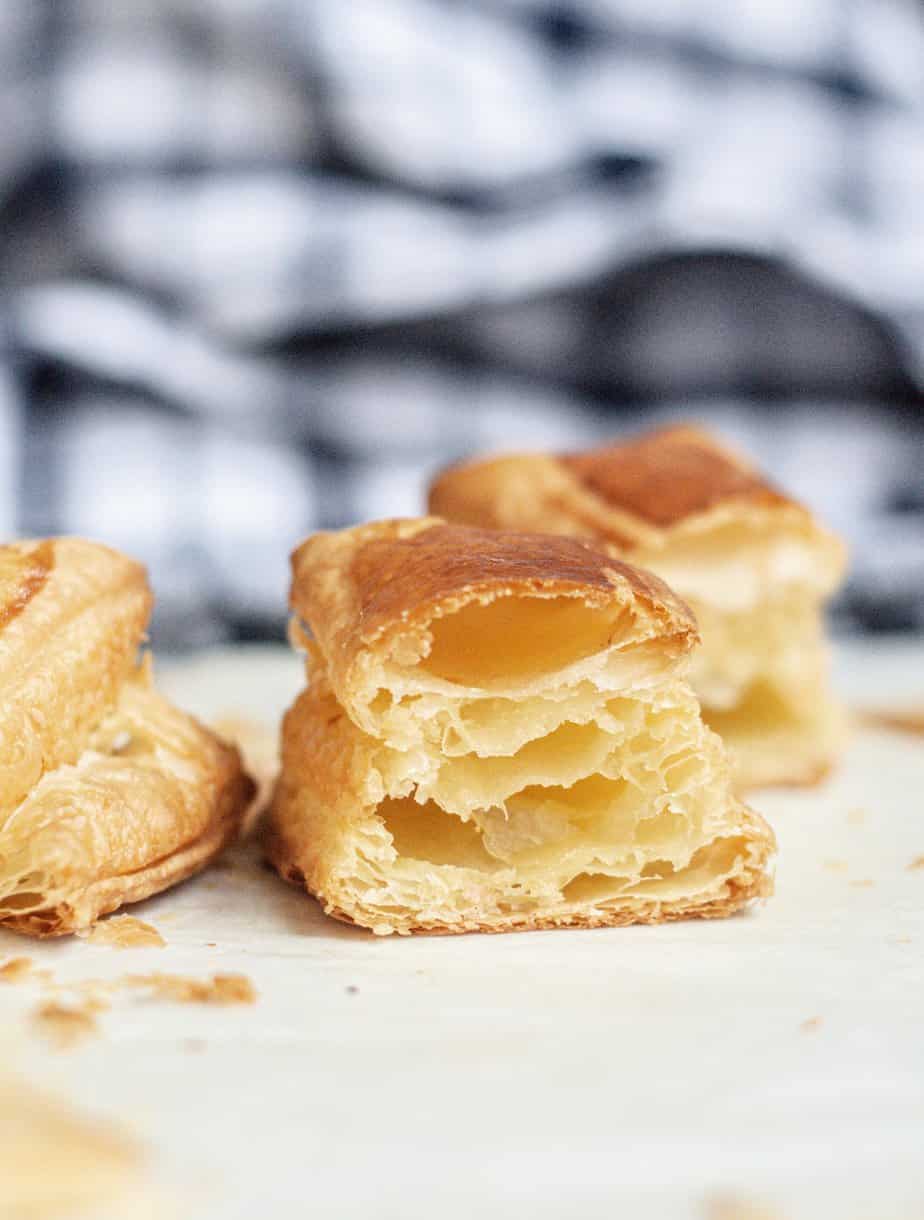
Discard starter pastry
There’s no need to feed your sourdough starter for this pastry, an unfed or discard starter is best.
The pastry relies on bacteria in the starter to ferment the flour, not the yeast component of a starter. It’s the water that evaporates from the butter that gives puff pastry its rise.
The sourdough puff pastry process
Puff pastry is rolled out and folded multiple times to create the iconic layers, and the ‘puff’. The fermented sourdough base dough is so pliable and doesn’t resist rolling the way that regular dough often can if it’s not allowed to rest.
Usually, puff pastry needs hours resting between each couple of turns to rest the gluten.
This sourdough puff pastry requires a shorter amount of refrigerated resting during the folds, only really to keep the butter chilled.
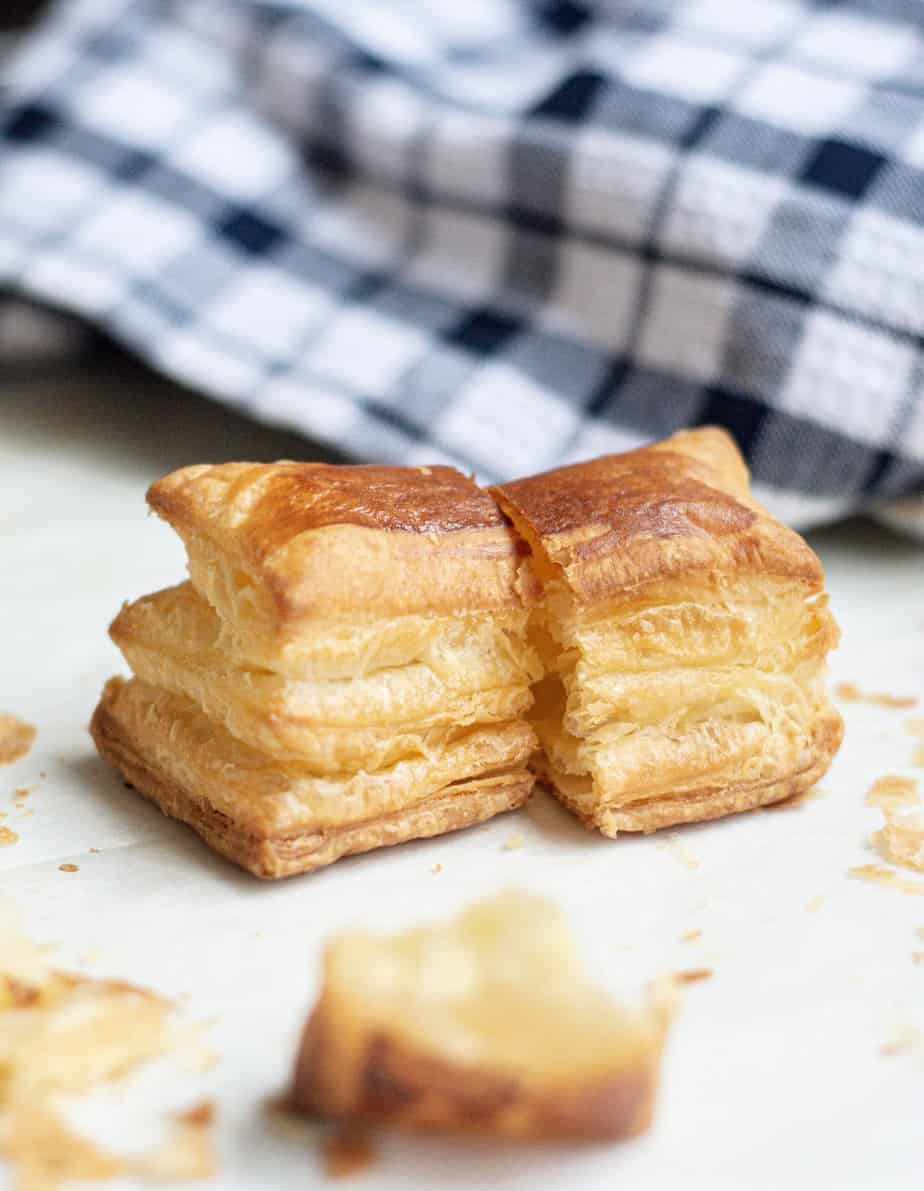
Day 1
The détrempe
Is the day to make the détrempe , the initial dough. It’s flour, sourdough starter, a little salt, melted butter, and cold water.
This is worked into a ball of dough, then placed in the refrigerator, in an airtight container for at least 8 hours and up to 20.
There’s no need for long kneading of this dough. Unlike sourdough bread dough, you don’t want to develop the gluten too much.
Day 2
Lamination
This is when a rather large amount of butter is rolled into the dough.
The dough is folded, turned, and rolled out about 6 times to incorporate the butter and establish those layers. In between some of the folds (every second fold), the dough is chilled to keep the butter cool.
The butter needs to stay cool so it doesn’t ooze out of the sides or melt into the dough. However it’s also important to keep it a little pliable, so it’s a similar consistency to the dough.

Lamination steps
Butter block
Take two sheets of baking paper and slice room temperature butter into 4 even slices. Lay the slices of butter in a square on one baking paper sheet. Place the second sheet of baking paper overtop. Using a rolling pin, roll the butter out into a 15 x 20cm (6″x8″) rectangle.
Alternatively, you can mix up the butter into a soft mixture and roll that out into a square.
Place the butter in the refrigerator for around 10 minutes to firm up, but ensure it’s still pliable and not rock hard.
Laminating
Firstly, take the détrempe dough from the refrigerator and roll it out in front of you into a 20 x 30cm (8″x12″) rectangle. Secondly, lay the cool butter on the dough on the bottom 2 thirds of the dough rectangle.
Fold over the top third, over the butter. Take the bottom third and fold that over like a pamphlet (the bottom third will be both dough and butter.)
The dough is now a horizontal rectangle. Turn it one-quarter turn clockwise so that it is now a vertical rectangle. Gently push with a rolling pin a few times along the length of the dough to help work in the butter.
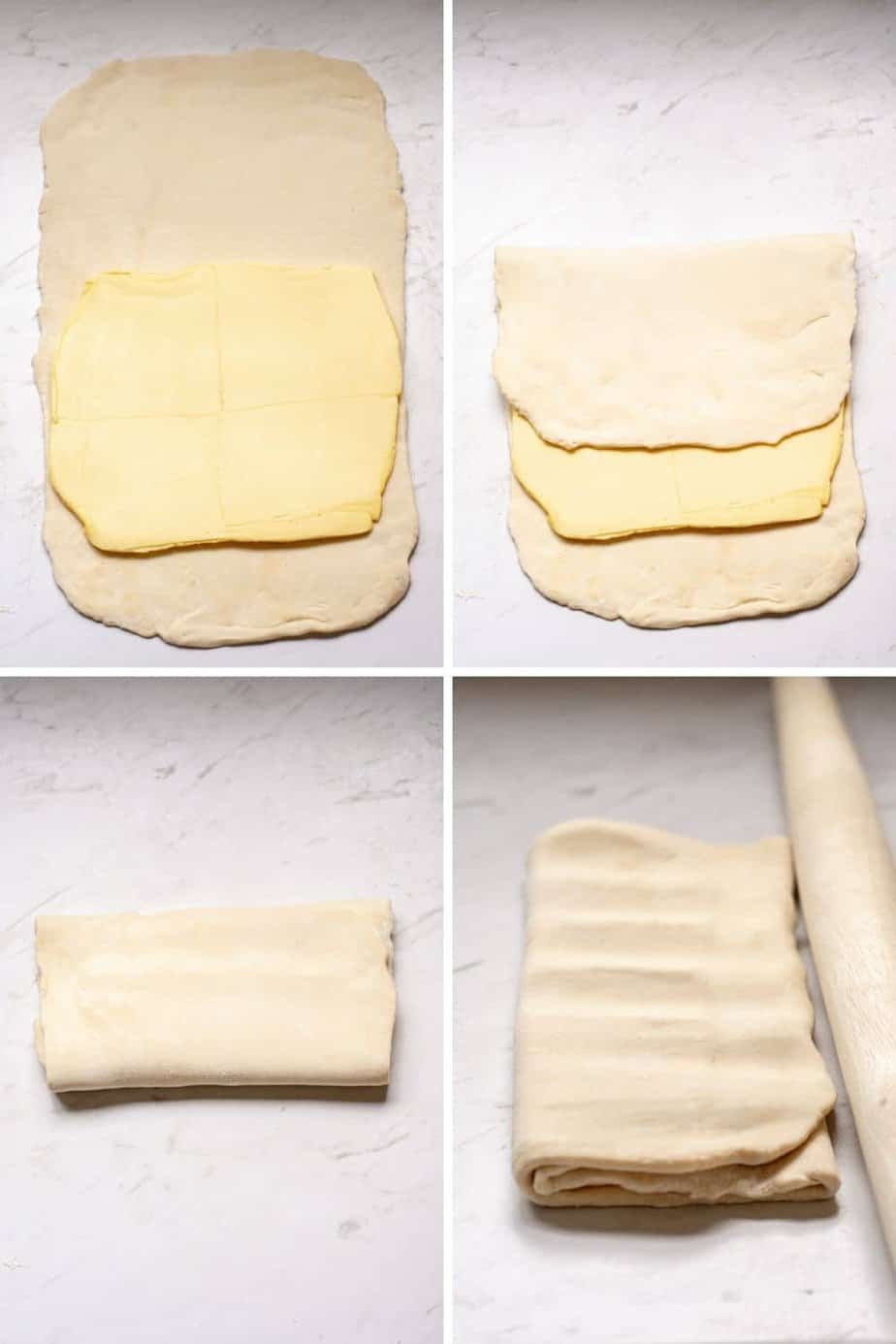
Roll the pastry out into another 20 x 30cm (8″x12″) rectangle and fold it once again into a pamphlet. Turn the pamphlet 90 degrees and roll it out again into a 20 x 30cm (8″x12″) rectangle, and fold it up into a pamphlet.
That was two turns and rolls in total. Now the folded dough needs to rest in the refrigerator for at least 30 minutes.
After 30 minutes remove it from the refrigerator and lay it out on the bench so it is a vertical rectangle.
Roll it out again into a 20 x 30cm (8″x12″) rectangle and repeat the folding, and rolling to complete another two turns. Chill the dough for at least 30 minutes.
Repeat this process one more time, so in total the dough was turned and rolled a total of 6 times.
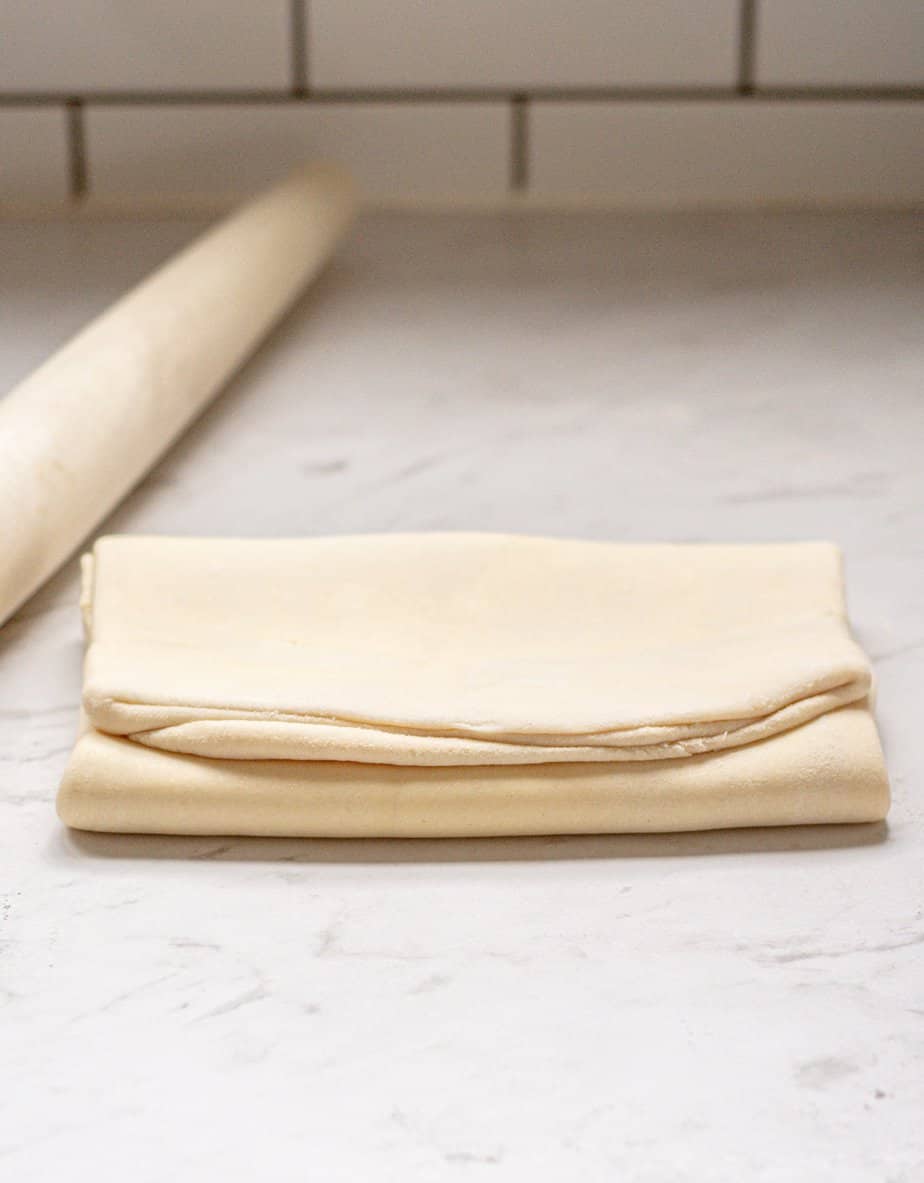
Chilling the dough
Chill the dough for a minimum of 2 hours in the refrigerator after the final turn.
Alternatively, it can be frozen for up to 4 months to use at a later date.
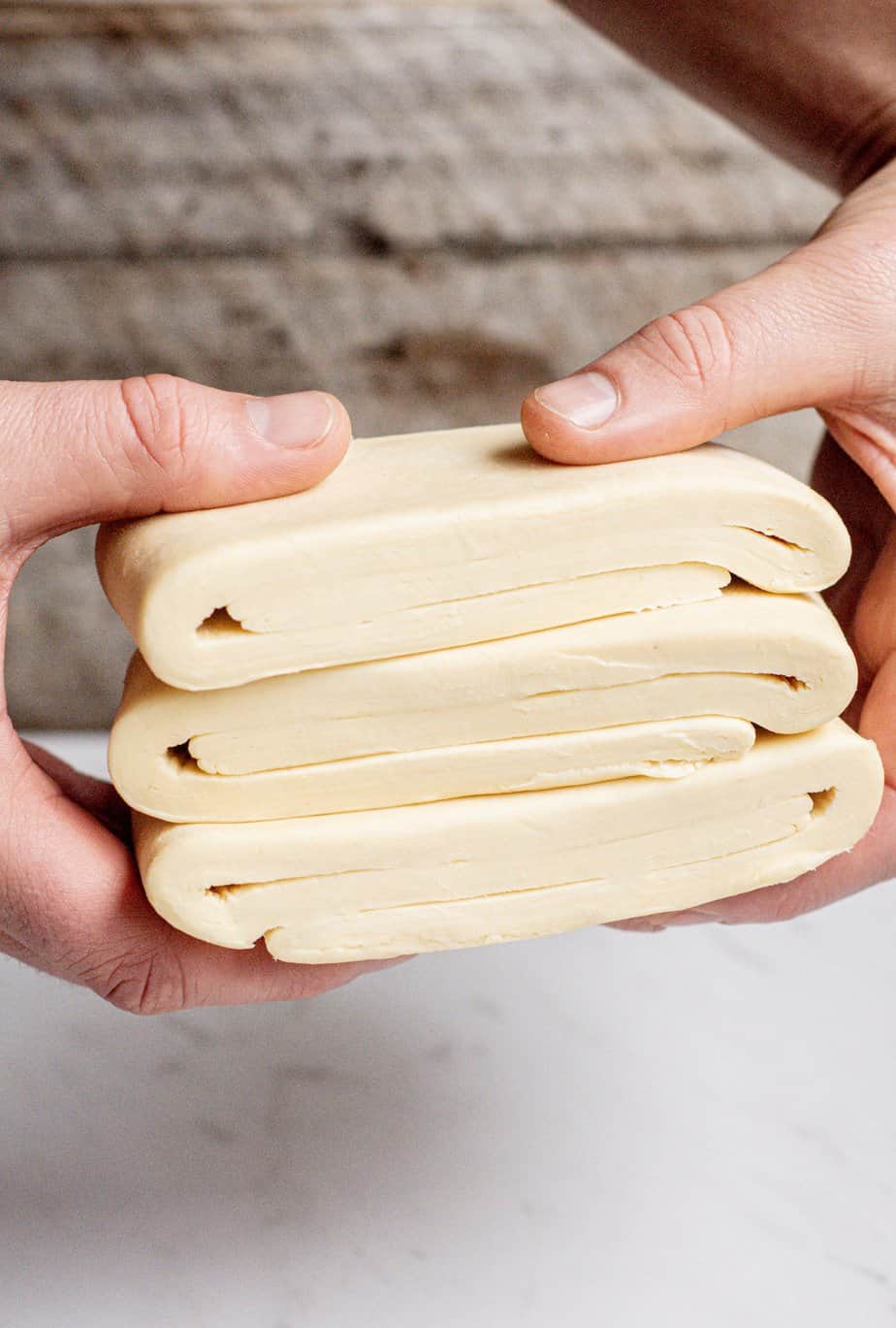
Cooking temperature and time
The cooking temperature and time will depend on the recipe you use the puff pastry in. Puff pastry does best in an initially hot oven of around 200°C/392°F for the first 10-15 minutes to allow the pastry to puff up nice and big.
Afterward, the temperature can be lowered to let the pastry finish cooking through. The time needed for this depends on how the puff pastry is being used.
A good puff pastry will quadruple in height, and butter leakage should not be an issue. If you find your pastry is leaking, or it’s not rising well it is probably the butter that hasn’t been incorporated evenly.

Storing
Unbaked puff pastry can be frozen for up to 4 months to use at a later date.
If you’re freezing it, let it thaw in the refrigerator or at room temperature before rolling it out. Don’t let the dough warm up so the butter doesn’t melt and the dough becomes too floppy to use.
This recipe makes only 500g. It can be easily doubled if you’d like to make extra pastry for future uses.
Puff pastry recipes
Two of my favorite ways to use puff pastry are by making flaky sourdough palmiers or mini apple hand pies! Or try this blueberry puff pastry galette!
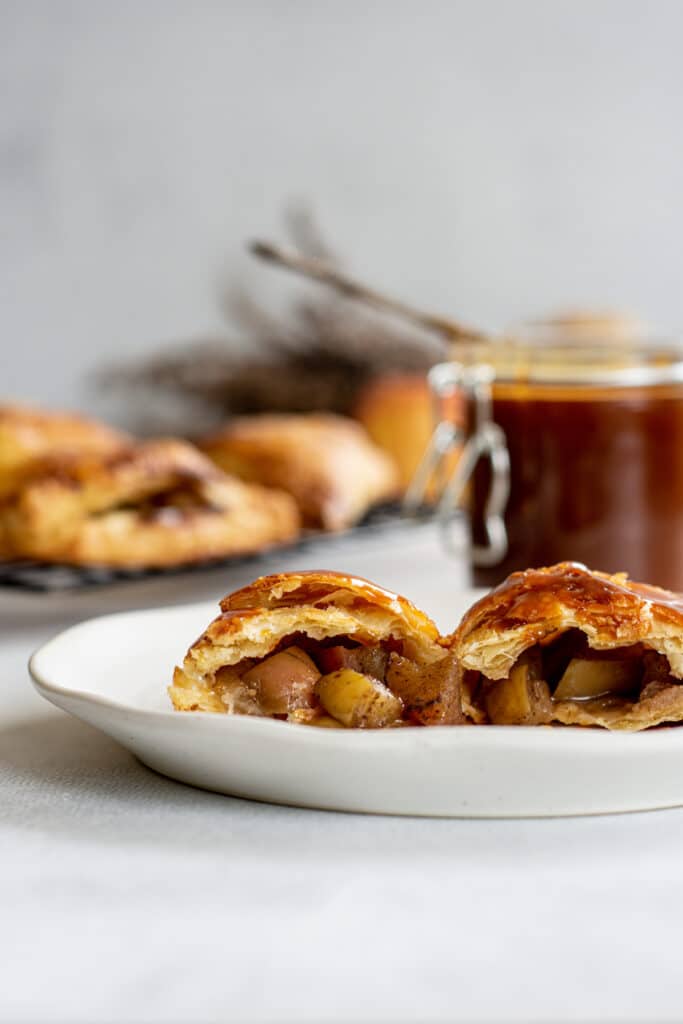
More sourdough discard recipes

Sourdough Puff Pastry
Flaky sourdough puff pastry. This recipe makes 500g puff pastry. It can easily be doubled to make extra to freeze for future use.
Ingredients
- 225g all-purpose flour
- 60g sourdough discard starter
- 100-120ml cold water
- 1/4-1/2 tsp salt (1/4 if using salted butter)
- 230g butter
Instructions
- Day 1: Melt 30g of the butter and set aside. In a bowl, add the flour, sourdough starter, salt, water, and melted butter. Start with 100ml of the water and mix it until it forms a ball. Add in the remaining 20 ml if necessary. Knead it for 4-5 minutes into a smooth ball then place it in an airtight container in the refrigerator for 8-20 hours.
- Leave the remaining 200g of butter at room temperature ready for day 2.
- Day 2: Take two sheets of baking paper and slice room temperature butter into 4 even slices. Lay the slices of butter in a square on one baking paper sheet. Place the second sheet of baking paper overtop. Using a rolling pin, roll the butter out into a 15 x 20cm (6"x8") rectangle. Alternatively, you can mix up the butter into a soft mixture and roll that out into a square.
- Place the butter rectangle in the refrigerator for around 10 minutes to firm up slightly, but ensure it’s still a little pliable and not rock hard. If you're making the butter block in advance, take it out 15 minutes before you laminate the dough, to slightly soften. You want the butter and dough to be similar consistency.
Laminating
- Firstly, take the dough from the refrigerator and roll it out in front of you into a 20 x 30cm (8"x12") rectangle. Secondly, lay the cool butter on the dough on the bottom 2 thirds of the dough rectangle.
- Fold over the top third, over the butter. Take the bottom third and fold that over like a pamphlet (the bottom third will be both dough and butter.)
- The dough is now a horizontal rectangle. Turn it one-quarter turn clockwise so that it is now a vertical rectangle. Gently push with a rolling pin a few times along the length of the dough to help work in the butter. Roll the pastry out into another 20 x 30cm (8"x12") rectangle and fold it once again into a pamphlet. Turn the pamphlet 90 degrees and roll it out again into a 20 x 30cm (8"x12") rectangle, and fold it up into a pamphlet.
- That was two turns and rolls in total. Now the folded dough needs to rest in the refrigerator for at least 30 minutes.
- After 30 minutes remove it from the refrigerator and lay it out on the bench so it is a vertical rectangle.
- Roll it out again into a 20 x 30cm (8"x12") rectangle and repeat the folding, and rolling to complete another two turns. Chill the dough for at least 30 minutes.
- Repeat this process one more time, so in total the dough was turned and rolled a total of 6 times.
- After all the turns are completed, let the dough chill for a minimum of 2 hours in the refrigerator before rolling it for baking.
Baking Temperature and Time
- The baking temperature and time will depend on the recipe you use the puff pastry in. Puff pastry does best in an initially hot oven of around 220°C/425°F regular oven or 200°C/392°F Fan-bake for the first 10-15 minutes to allow the pastry to puff up nice and big.
- Afterward, the oven temperature can be lowered to allow the pastry to continue baking. How long it needs to be baked for depends on how it is being used.
Notes
The puff pastry can be frozen for up to 4 months to use at a later date. If you’re freezing it, let it thaw in the refrigerator or at room temperature before rolling it out. Don't let the dough warm up so the butter doesn't melt or the dough becomes too limp to work with.
This recipe makes only 500g. It can be easily doubled if you'd like to make extra pastry for future uses.
Nutrition Information:
Yield: 12 Serving Size: 1 gramsAmount Per Serving: Calories: 219Total Fat: 16gSaturated Fat: 10gTrans Fat: 1gUnsaturated Fat: 5gCholesterol: 41mgSodium: 339mgCarbohydrates: 17gFiber: 1gSugar: 0gProtein: 3g
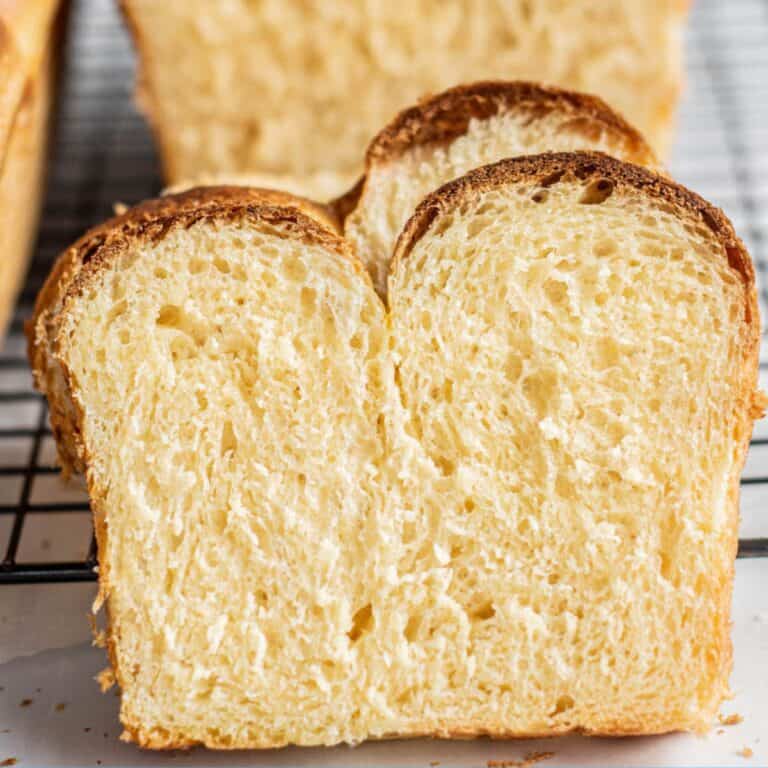


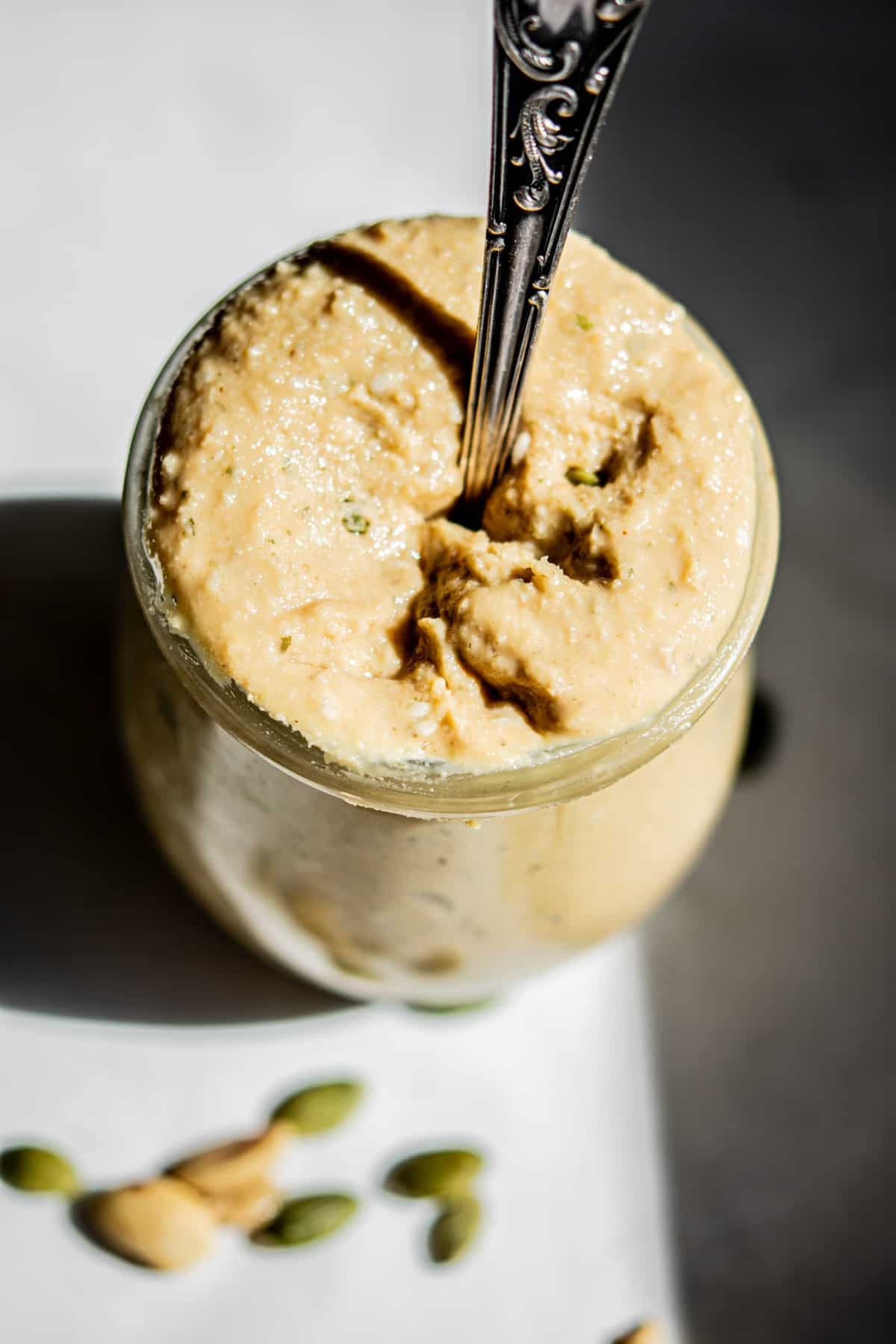


I know you said that a starter fed within the last 10 hours is good to use. Should it pass a float test? Or is it ok to use a starter which was just fed an hour before hand?
1 hour is too early as that will still include a lot of unfermented flour. You can use the float test to test it 😊
If we are doubling the recipe, do we need to roll the butter and dough to twice the dimensions specified? So each time it would be 40 x 60 cm?
I just doubled the recipe and I doubled the dimensions as well when I was rolling it out. Make sure your butter isn’t too soft or it’ll be difficult to roll out, trust me on that one haha. Other than that, it seems to be the same as if you did a smaller batch. I’m hoping this recipe is forgiving on how much rolling and handling is applied to it :).
I doubled it and kept the dimensions the same with no problems! Theres no need to make it twice as long
Hi! How thick should I roll it out before I cook it? And at what temp/how long should I cook it? I’m planning to use it ontop of a Irish pot pie. Thanks so much!!
Heya, you can treat as you would store bought puff pastry sheets and roll it as thin as they would be, about 4-5mm and bake it at a higher temperature for 10 minutes to get that initial oven spring (around 220 Celsius), then lower the temp to continue baking until crispy 😊
Depends what your doing with it? I roll mine thicker for pastries and thinner for wellington so whatever your recipe says
Hey 🙂
Your recipes all look great, can’t wait to give one a try this weekend!
I’m fairly new to baking, especially sourdough. I was wondering what the difference is between the puff pastry recipe and the pastry used in the croissant recipe? Is it the same base they are just different end products?
Thanks!
Bethan
Hey, so the croissant dough is a bit different. It rises using both yeast from the starter and from the butter in the layers, so it needs an active and fed starter. Whilst the puff pastry gets its rise purely from the water in the butter evaporating, which is why it gets rolled 3 more times than croissants, to create more layers and more rise. And that’s also why a puff pastry can be made using older or discard starter, it doesn’t need the yeast😊
Hi. Thank you for the detailed recipe an pictorial folding technique. You mentioned this can be made with discard starter. So i am assuming levain past its peak is fine to go too, right?
Yup 😊
Can this dough be frozen and used for baking later?
Yup it can 🙂 there are notes about it in the post
Do you use 100% hydration starter?
Yup 🙂
First time attempting sourdough puff pastry and it worked amazingly! I’ve just used the pastry to make veggie sausage rolls and they are simply delicious.
Thank you for the recipe
i understood the starter to be a discard rather than 100% hydration??
Hey Nancy it is still discard starter but my starter is always 100% hydration as well since it’s fed equal weights water and flour
is there a video to watch?
Not yet for this post unfortunately!
Im really interested to make it with you recipe , but I am totally new to puff pastry, wish I could watch a video from you to follow .
If you double the recipe, can you just roll it double the size, or must you do it twice? Thank you!
You can double the recipe and just roll it a bit bigger 🙂
I’m excited to try this, thanks for explaining your recipe and process so thoroughly. For this recipe, do the shaped pastries need to proof before baking?
Hey, nope they don’t! All the rising for this pastry comes from the butter 🙂
Omg this is the best puff pastry recipe. I will never use store bought again. It was so light airy, flaky delicate but can hold toppings. My friends could not stop eating it. Truly amazing thanks so much for sharing! I will always have some in my freezer. I used it after thawing in the refrigerator it couldn’t have been better.
So happy you loved it!! Thank you!
How do you convert the amounts to cups and teaspoons or tablespoons? I’ve all but given up trying to figure this out. Thank you!!!
Hey Deb, for American cups it’s around 1 3/4 cup + 1/2 tablespoon flour, 1/4 cup sourdough discard, 1/3-1/2 cup water, 1 cup butter.
Thank you SO much – this pastry is delicious! I used it to make sausage rolls topped with sesame seeds for Christmas, and they looked and tasted amazing 🙂 My family loved them 🙂 The pastry was buttery, light, gorgeous with a very slight tang. A million times better than store bought. I think I’ll be making these every year now!
So happy to hear you loved it!! 😃 thank you!
Nice way of using a discard starter, thanks for pointing this out! Will definitely try it over the weekend (and let you know how this compares to a classic “pâte feuilletée”).
One note: I had never heard of the English “detemper”. In French, we say “détrempe” (for flour which needs to absorb water, and is usually cooled down). Funny to see how the “r” shifted from the ‘t’ to the end of the word.
Ohh I’ve been spelling it wrong the entire time! Thank you for pointing that out! I hope you enjoy the recipe 😀
Actually I think you were doing it right! The English seems to be “distemper” so indeed with the inversion on the “r”.
Feeding my surdough just now… so let’s see 😉
thanks again for all the beautiful and inspiring recipes.
This is an amazing recipe. I make it at least twice a month and I agree, the discard makes it an absolute pleasure to handle. I had to start searching for creative ideas/recipes to use all the puff I make! Haha!
I tried both the puff pastry and croissant discard recipes and both were wonderful!! No problems whatsoever! Highly recommend!
Hi there I was so excited to try out this recipe. I still have one more roll and turn to go but it has been a huge butter mess for me. I’m not sure what happened lol I followed everything exactly I did two Separate doughs and one is a little better but the butter is just coming out from everywhere. I’m just worried I won’t be able to use it.
Hey, it might be too warm if the butter is squishing out! Chill it until it firms up before rolling